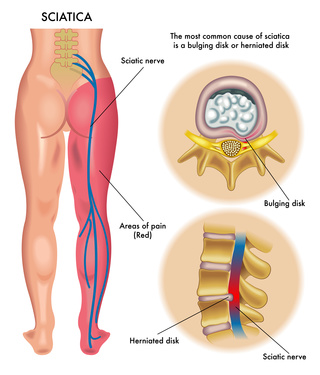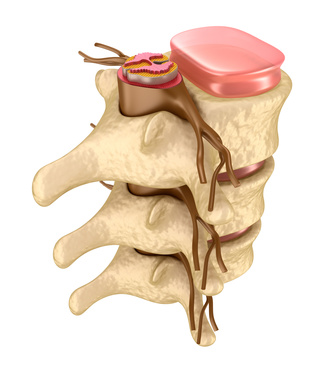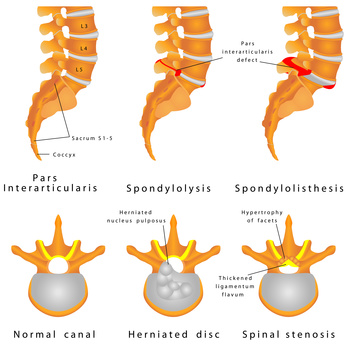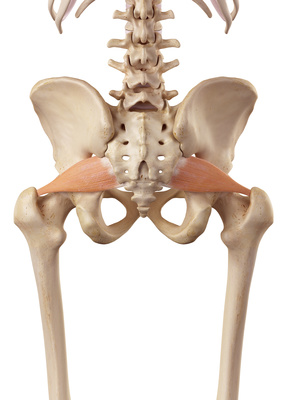Sciatica
Hello and welcome back to the ThreeSpires Physiotherapy blog where we take a look at all things physiotherapy and health related. I have been meaning to cover the topic of sciatica for quite a while as it is a problem that many of our patients have suffered with and that we have been able to help many patients with. As anyone who has had sciatica can tell you it can be extremely painful and debilitating and can cause time off work. At ThreeSpires Physiotherapy our physiotherapists have had a large amount of experience of treating patients with sciatica and so I thought it might be helpful to have a look in detail at what sciatica is and how it can be treated by physiotherapy.
What is Sciatica?
 Before thinking about how physiotherapy might help with sciatica it is probably best first of all to be clear about what sciatica is. Sciatica simply put is a generic term for any irritation of the sciatic nerve. The sciatic nerve is the largest nerve in the human body and runs from the low back down through the gluteal area (buttocks), down the back of the leg and into the calf. It supplies a nerve signal to all of the muscles of the leg and when irritated can cause large amounts of excruciating leg pain.
Before thinking about how physiotherapy might help with sciatica it is probably best first of all to be clear about what sciatica is. Sciatica simply put is a generic term for any irritation of the sciatic nerve. The sciatic nerve is the largest nerve in the human body and runs from the low back down through the gluteal area (buttocks), down the back of the leg and into the calf. It supplies a nerve signal to all of the muscles of the leg and when irritated can cause large amounts of excruciating leg pain.
What are the Symptoms of Sciatica?
The symptoms of sciatica are very varied but in general when the sciatic nerve is irritated it can cause pain in any of the areas that it supplies such as the glutes, thigh, calf and foot. If the sciatic nerve is irritated or compressed enough this can the cause a reduction in the strength of the signal to some muscles and subsequently a loss of strength in these muscles. Patients with sciatica can also experience pins and needles, reduced sensation and numbness in the leg or foot. The pain can sometimes be shooting or may instead be an aching kind of pain.
What is the Sciatic Nerve?
Before continuing further discussing sciatica and its symptoms and causes I think it is worth briefly having a think about some anatomy. The low back (lumbar spine) comprises of 5 vertebrae (L1 – L5) which join up to the sacrum at L5 and at each vertebrae a nerve root exits. The sciatic nerve itself comprises of the nerves exiting at the levels of L4 to S3 which join together in a bundle of fibres which make up the sciatic nerve. As described earlier this nerve then passes through the gluteal region – very close to the muscle piriformis (which we shall discuss a bit more about later), it the travels down the back of the leg to the back of the knee (an area called the popliteal fossa) at which point it splits into two branches: the tibial nerve (this goes down the back of the calf) and the common peroneal nerve which comes down the outside of the shin.
Who is at Risk of Getting Sciatica?
Anyone can get sciatica as everyone has a sciatic nerve and it can be irritated but certainly there are some people who are more at risk of getting sciatica than others. People who have a very high BMI (Body Mass Index) and are obese are more at risk and it tends to occur mostly between the ages of 35 & 50 – although it does depend exactly upon what you define sciatica as. Women in pregnancy are also at risk of developing sciatica due to pressure upon the spine and changes in the strength of the pelvic girdle.
What are the Causes of Sciatica?
There are a range of possible causes of sciatica and this is because it is an extensive nerve and it could be irritated in a number of places and ways. These are described below:
 Spinal Disc Herniation: this is the most common cause of sciatica and occurs when an intervertebral disc is compressed and the inner jelly part spills out and compresses the nerve root. This sends sharp pains into the leg and can give pins and needles and numbness as well. This has traditionally been known as a “slipped disc” and is now an area of much debate as to how important it really is when thinking about sciatica.
Spinal Disc Herniation: this is the most common cause of sciatica and occurs when an intervertebral disc is compressed and the inner jelly part spills out and compresses the nerve root. This sends sharp pains into the leg and can give pins and needles and numbness as well. This has traditionally been known as a “slipped disc” and is now an area of much debate as to how important it really is when thinking about sciatica.
 Spondylolishthesis: this is the forward slip of one vertebrae over another and can cause the nerve root to be compressed and irritated.
Spondylolishthesis: this is the forward slip of one vertebrae over another and can cause the nerve root to be compressed and irritated.
 Piriformis Syndrome: as the sciatic nerve passes through the gluteal (bum) area it passes very close to a muscle called piriformis and in some people it may even pass through piriformis. Sometimes it is thought that piriformis can spasm or pinch the sciatic nerve and cause irritation here. This is a subject of much debate in the world of physiotherapy as to whether piriformis is actually the culprit and some people prefer to call this deep gluteal syndrome to reflect the uncertainty.
Piriformis Syndrome: as the sciatic nerve passes through the gluteal (bum) area it passes very close to a muscle called piriformis and in some people it may even pass through piriformis. Sometimes it is thought that piriformis can spasm or pinch the sciatic nerve and cause irritation here. This is a subject of much debate in the world of physiotherapy as to whether piriformis is actually the culprit and some people prefer to call this deep gluteal syndrome to reflect the uncertainty.
What are the Treatments for Sciatica?
Sciatica is a very variable condition ranging from a slight ache in the leg to raging pain, numbness and loss of strength in the leg muscles. As such the right treatment for sciatica will depend upon how badly it is affecting you and for how long it has been going on. If you have sciatica I would suggest that it is probably best to get an early assessment with a physiotherapist who will be able to guide you as to what is best. Below are some general treatment options available for sciatica:
 Rest: I can almost hear some people saying that rest is not a treatment option! However, I have helped a lot of people with sciatica and I beg to differ! Certainly in the early days rest and avoiding irritating the sciatic nerve will be a key part of treatment for sciatica. The patients who often have the hardest time getting rid of their sciatica or who have the greatest pain are those who instead of resting and avoiding hurting their sciatic nerve have kept on going and have after a period of many weeks (or even months) have got to a point where everything they do is agony. Allowing your sciatic nerve time to recover from being irritated is definitely the right thing to do in the early days and will avoid the nerve becoming extremely sensitised and difficult to treat.
Rest: I can almost hear some people saying that rest is not a treatment option! However, I have helped a lot of people with sciatica and I beg to differ! Certainly in the early days rest and avoiding irritating the sciatic nerve will be a key part of treatment for sciatica. The patients who often have the hardest time getting rid of their sciatica or who have the greatest pain are those who instead of resting and avoiding hurting their sciatic nerve have kept on going and have after a period of many weeks (or even months) have got to a point where everything they do is agony. Allowing your sciatic nerve time to recover from being irritated is definitely the right thing to do in the early days and will avoid the nerve becoming extremely sensitised and difficult to treat.
- Early Intervention: see a physiotherapist early on (ideally within a week of developing sciatica). This will allow you to understand what you need to, what you need to avoid doing and how best to manage your sciatica. This will undoubtedly speed up the process of recovery. For me as a physiotherapist the most difficult patients to help with sciatica are those who have had it for months and months and who have now reached a crisis point.
 GP: As with my other advice if you have sciatica and are in a lot of pain I would strongly advise seeing your GP early on, so that they can help you with pain relief and sign post you to NHS services. Your GP will be able to discuss and prescribe the most appropriate type of painkillers which is vital as being in large amounts of pain will make you alter your walking and movement and cause problems in other areas. Also, if you are having difficulty sleeping due to the pain from your sciatica they will also be able to help with this.
GP: As with my other advice if you have sciatica and are in a lot of pain I would strongly advise seeing your GP early on, so that they can help you with pain relief and sign post you to NHS services. Your GP will be able to discuss and prescribe the most appropriate type of painkillers which is vital as being in large amounts of pain will make you alter your walking and movement and cause problems in other areas. Also, if you are having difficulty sleeping due to the pain from your sciatica they will also be able to help with this.
 Physiotherapy: now I might be a touch biased here! However, in all honesty I really do believe that seeing a physiotherapist early on when suffering with sciatica can help a great deal. My experience has been that physiotherapy can be very effective in the treatment of sciatica and that patients who see myself or one of our other physios early on with sciatica recover very well.
Physiotherapy: now I might be a touch biased here! However, in all honesty I really do believe that seeing a physiotherapist early on when suffering with sciatica can help a great deal. My experience has been that physiotherapy can be very effective in the treatment of sciatica and that patients who see myself or one of our other physios early on with sciatica recover very well.
 Nerve Root Injections: for some people no matter what they do their sciatica just will not go away. They have tried resting, seen a physio and been on painkillers for a long period. In these cases seeing a spinal consultant to determine the best course of action s the next step. Usually in these cases an MRI will be ordered to determine which spinal level is the issue and the consultant will perform a nerve root injection to try to de-sensitize the nerve root that is causing the pain.
Nerve Root Injections: for some people no matter what they do their sciatica just will not go away. They have tried resting, seen a physio and been on painkillers for a long period. In these cases seeing a spinal consultant to determine the best course of action s the next step. Usually in these cases an MRI will be ordered to determine which spinal level is the issue and the consultant will perform a nerve root injection to try to de-sensitize the nerve root that is causing the pain.
 Surgery: in the vast majority of cases patients with sciatica do not need surgery. However there are a very small number of people with sciatica for whom surgery and usually a micro-discectomy is the only solution. Here the surgeon will try to decompress the nerve root that is irritated and causing your sciatica by removing the part of the disc that is sitting on the nerve.
Surgery: in the vast majority of cases patients with sciatica do not need surgery. However there are a very small number of people with sciatica for whom surgery and usually a micro-discectomy is the only solution. Here the surgeon will try to decompress the nerve root that is irritated and causing your sciatica by removing the part of the disc that is sitting on the nerve.
How Can ThreeSpires Physiotherapy Help with my Sciatica?
As I mentioned above my experience is that physiotherapy can really help anyone with sciatica and our physiotherapists have a large amount of experience of helping patients with sciatica get back to a normal pain free life. So, I thought it be helpful to have a look at how our home visit physiotherapy service can help patients with sciatica and the process involved.
 Initial Assessment: Firstly after booking a home visit from one of our physiotherapists – this can be done easily either via email or calling us and having a chat, an initial assessment will be arranged. This initial physiotherapy assessment for sciatica takes place at your home at a convenient time of yoru choosing. The assessment is 1hr in length and begins with a discussion of how your sciatica began, where the pain is, the type of pain and any past medical history relevant to your sciatica. After this our physio will conduct a detailed and comprehensive physical assessment to determine the underlying cause of your sciatica and the best treatment options to help with your sciatica. At the end of the physical assessment our physio will discuss with you the underlying causes of your sciatica and what the best plan of action is. Then treatment commences for your sciatica – this usually involves soft tissue massage for the low back area and glutes to help relieve tension and pain and also some spinal manipulation of the relevant areas for your sciatica. After the physical treatment component has finished your physio will then give you a series of exercises and stretches aimed at enabling you to manage your sciatica and get yourself better. Your physio will then book any follow up treatment sessions needed to help with your sciatica.
Initial Assessment: Firstly after booking a home visit from one of our physiotherapists – this can be done easily either via email or calling us and having a chat, an initial assessment will be arranged. This initial physiotherapy assessment for sciatica takes place at your home at a convenient time of yoru choosing. The assessment is 1hr in length and begins with a discussion of how your sciatica began, where the pain is, the type of pain and any past medical history relevant to your sciatica. After this our physio will conduct a detailed and comprehensive physical assessment to determine the underlying cause of your sciatica and the best treatment options to help with your sciatica. At the end of the physical assessment our physio will discuss with you the underlying causes of your sciatica and what the best plan of action is. Then treatment commences for your sciatica – this usually involves soft tissue massage for the low back area and glutes to help relieve tension and pain and also some spinal manipulation of the relevant areas for your sciatica. After the physical treatment component has finished your physio will then give you a series of exercises and stretches aimed at enabling you to manage your sciatica and get yourself better. Your physio will then book any follow up treatment sessions needed to help with your sciatica.
- Follow Up Sessions: these are almost always 30 minutes in length and also take place at your home. In these sessions your physio will spend the majority of the session with manual “hands on” treatment techniques aimed at relieving your pain and getting you moving better. They will also discuss progress and monitor your exercises and make any adjustments necessary to your management plan.
A Sciatica Case Study:
Although I have tried to be clear about the process involved with how our physiotherapy service can help you with sciatica, sometimes it can be helpful to have a real life example to understand the way things work. As such I have described a relatively recent case study example of a patient with sciatica and how we were able to help.
 The patient was a male in his late 50s who had the week before twisted and pulled his back. Initially he just had a large back spasm and assumed that with a little bit of rest this would go away but over the next few days he developed pain in his leg and buttock with pins and needles in his foot as well. The pain in his leg and buttock became more severe and after about a week of suffering with sciatica he gave us a call. At this point one of our physios was able to visit him the next day and complete a full assessment at home and determine that he did indeed have sciatica and that he had severely irritated his lumbar spine nerve root. Our physiotherapist then used a variety of hands on treatment techniques aimed at reducing the back spasm which would allow him to move more freely and also not irritate his nerve root so much. The patient was also given advice and some exercises to do in between session. Our physiotherapist then booked a further follow up session for later in the week. At the next session, although the patient was still in pain from his sciatica, things were definitely better and much more manageable and our physio continued to see the patient for the next couple of weeks until he had made a full recover and had a good programme of home exercises to follow in order to reduce the likelihood of a recurrence of his sciatica.
The patient was a male in his late 50s who had the week before twisted and pulled his back. Initially he just had a large back spasm and assumed that with a little bit of rest this would go away but over the next few days he developed pain in his leg and buttock with pins and needles in his foot as well. The pain in his leg and buttock became more severe and after about a week of suffering with sciatica he gave us a call. At this point one of our physios was able to visit him the next day and complete a full assessment at home and determine that he did indeed have sciatica and that he had severely irritated his lumbar spine nerve root. Our physiotherapist then used a variety of hands on treatment techniques aimed at reducing the back spasm which would allow him to move more freely and also not irritate his nerve root so much. The patient was also given advice and some exercises to do in between session. Our physiotherapist then booked a further follow up session for later in the week. At the next session, although the patient was still in pain from his sciatica, things were definitely better and much more manageable and our physio continued to see the patient for the next couple of weeks until he had made a full recover and had a good programme of home exercises to follow in order to reduce the likelihood of a recurrence of his sciatica.
Okay, I hope that you have found this blog about sciatica useful, if you or someone you know has sciatica or you simply want to know more then please get in touch. We are a home visit physiotherapy service based in Lichfield and serving areas such as Sutton Coldfield, Tamworth, Cannock, Walsall, Rugeley and Burton and we can be easily contacted via: enquiries@threespiresphysiotherapy.co.uk and 0788 428 1623
REQUEST A CALLBACK
Just fill in the form below and give us a quick idea of your problem/request so that we can be better prepared to help you.
